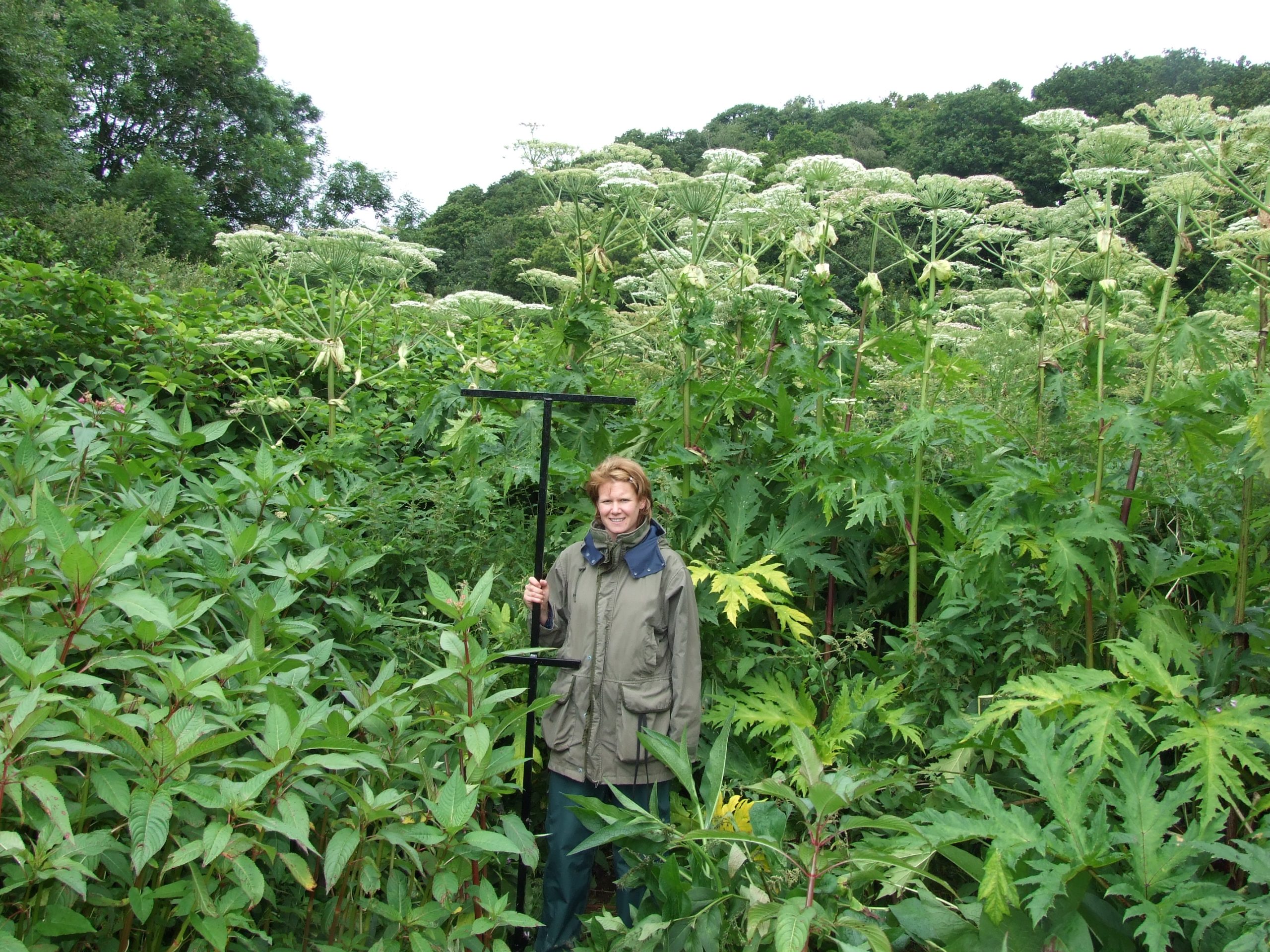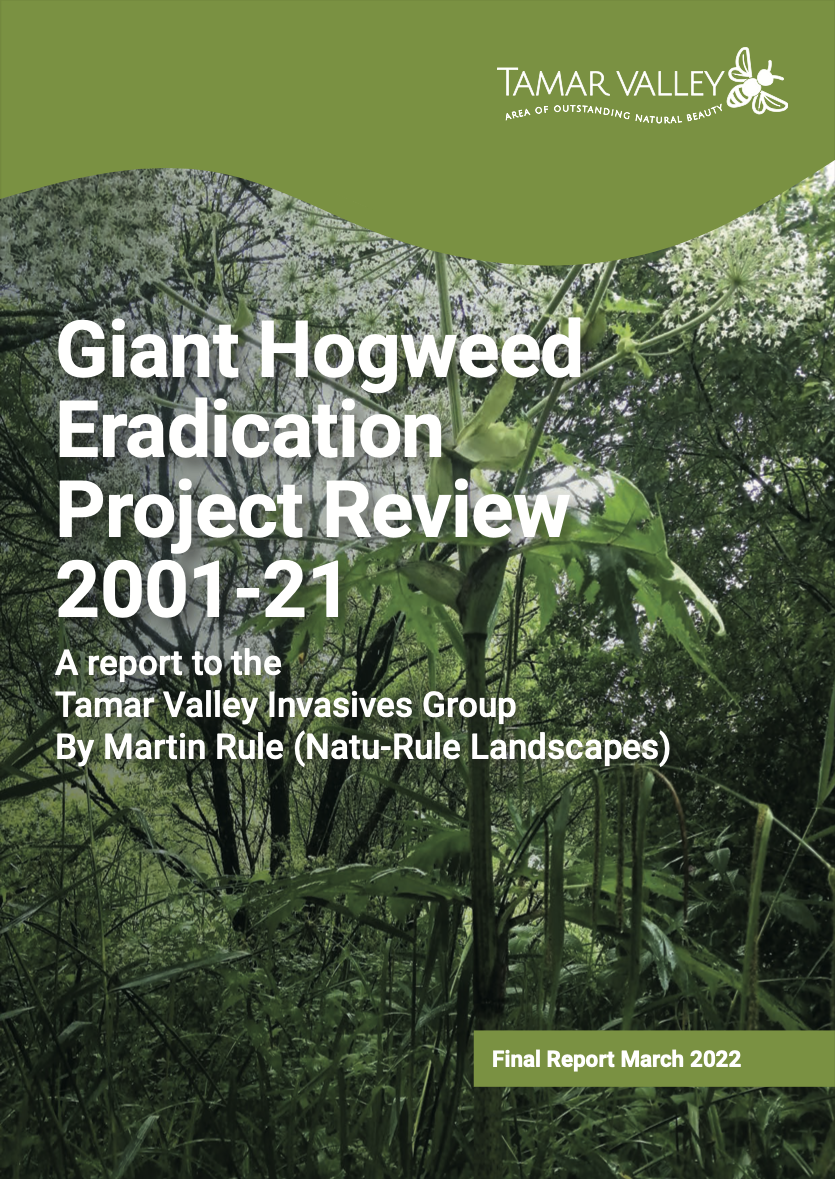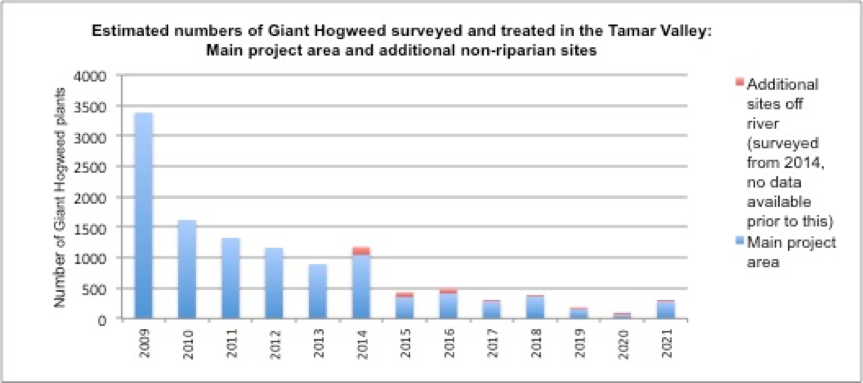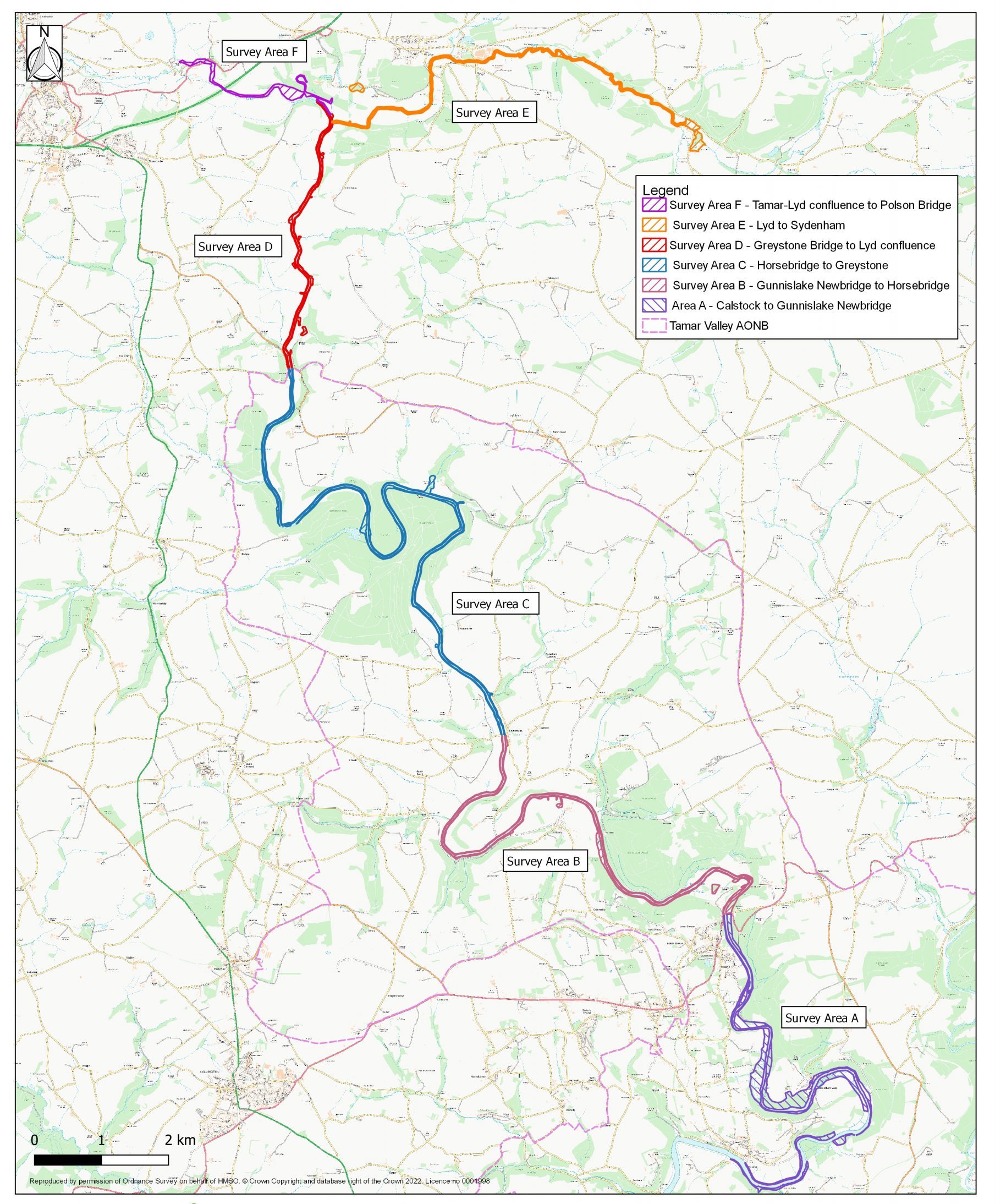Giant Hogweed - Eradication survey and control
Giant hogweed is listed under Schedule 9 to the Wildlife and Countryside Act 1981 with respect to England, Wales and Scotland.
As such it is an offence to plant or otherwise cause this species to grow in the wild.
Under the Environmental Protection Act 1990, giant hogweed is also classified as controlled waste.
More Information and downloadable ID sheet
In the Tamar Valley
Giant Hogweed (Heracleum mantegazzianum) poses a significant threat if allowed to spread, due to it being a public safety risk, with the ability to cause severe chemical burns in addition to the environmental degradation caused by all Invasive Non-Native Species (INNS).
At the turn of the century, there was increase concern about the growth of the Giant Hogweed population in the Tamar Valley and so, since 2001, concerted efforts have been made by the Tamar Valley Invasives Group to annually survey and control this species on river banks and floodplains, along a 45km stretch of the River Tamar and River Lyd .
Our ambition is to see the eventual eradication of Giant Hogweed in the Tamar Valley National Landscape. Reports reviewing twenty years of progress towards achieving that aim can be downloaded from the links below.

Tamar Valley National Landscape -- Giant Hogweed Eradication Project Review -- 2001-2021
Published March 2022
PDF downloadTamar Valley National Landscape -- Giant Hogweed Final Report -- 2023
Published January 2024
PDF downloadFINAL Tamar Valley INNS Control - Giant Hogweed & American Skunk Cabbage Control 2024 - Final Report
Published 2024
PDF downloadOngoing work
The project continues treatment to control giant hogweed on an annual basis.
Numbers of plants have shown a progressive decrease in the survey area in recent years.

Survey Area
The map shows the area surveyed for giant hogweed in 2021.
Note: survey areas A-E (from Calstock Quay upstream on the River Tamar to the Tamar-Lyd confluence and further upstream on the River Lyd as far as Greenlanes Bridge near Sydenham) have been surveyed annually for a number of years.
Survey area F was also surveyed in 2021, but no giant hogweed was located and the area was not visited in 2022.

Invasives control in the Tamar Valley
What can be done? – lessons from the past and future action
In May 2021, there was a focus on Invasive Non-Native Species (INNS) in the UK, with Invasive Species Week taking place towards the end of the month. A study in 2021 assessed the economic cost of INNS to the UK economy since 1976 to be between £5.4 and £13.7 billion. A combination of social and environmental problems caused by INNS makes it clear that action to control their spread, while challenging, should be taken if possible.
In advance of Invasive Species Week 2022, the Tamar Valley National Landscape and its partners in the Tamar Invasives Group, with the support of the South West Lakes Trust, held an event on May 12th at the Tamar Valley Centre. We looked at lessons learnt from the Tamar Valley Giant Hogweed Eradication project and also focussed on Japanese knotweed and Himalayan balsam in the National Landscape and wider catchment.
The Tamar Valley National Landscape and our partners in the Tamar Valley Invasives Group, are grateful to have been awarded an additional £10,200 funding through the Water Environment Grant (WEG) earlier in 2021, covering the cost of the 2021 survey and control work. In addition, South West Water generously donated an additional £4,895 in 2021, ring-fenced for future invasives work in the Tamar Valley.
